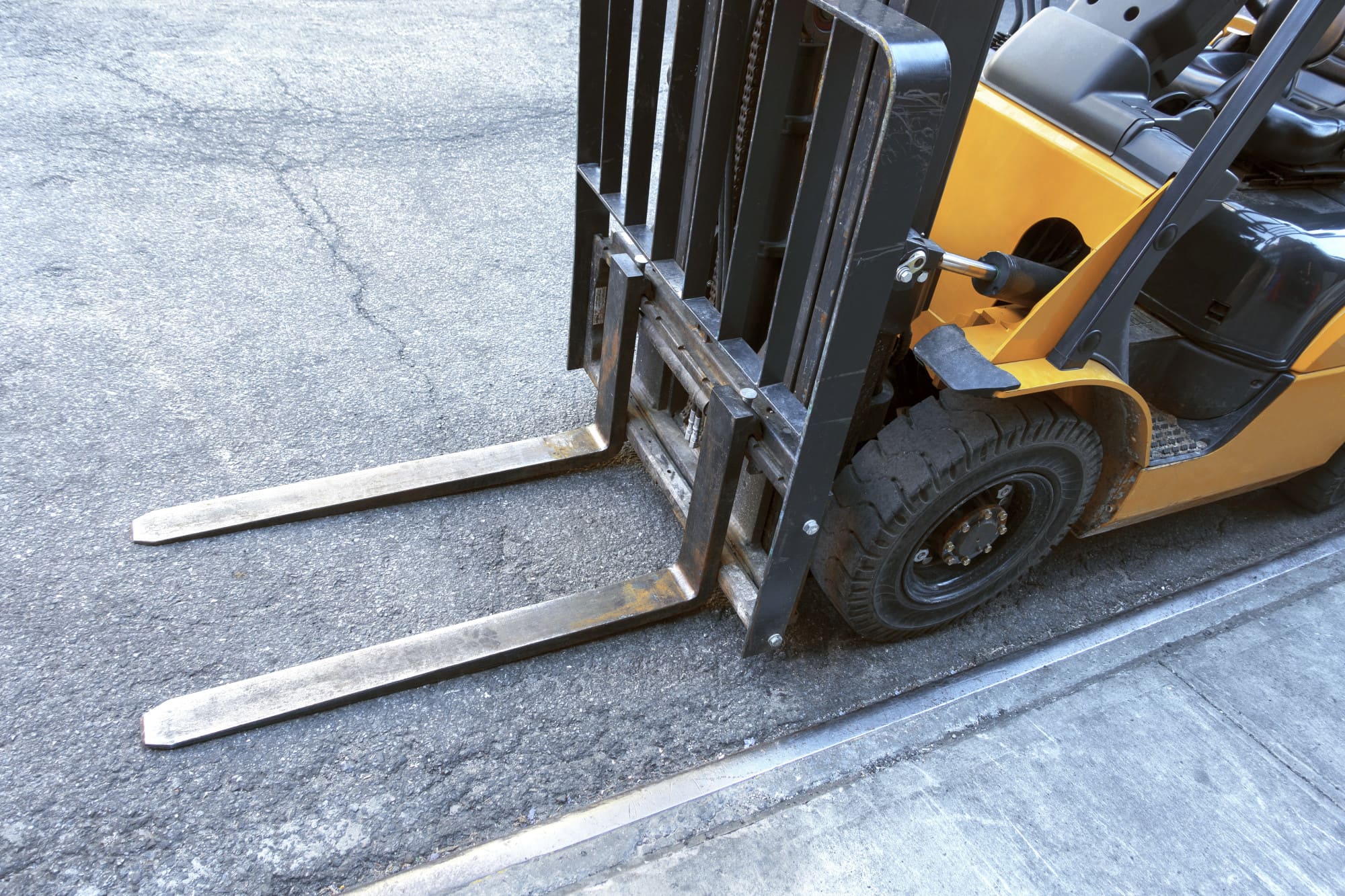As useful as they are, forklifts are also a workplace hazard. In 2018, forklift accidents caused 85 deaths and 7,940 nonfatal injuries.
Contrary to popular opinion, forklift drivers aren’t the only people at risk of injury. In fact, most forklift crashes involve pedestrians. This means that many employees working in the vicinity of a forklift could be victims of an accident.
The good news: proper safety policies can prevent the majority of these accidents. Here are 3 common forklift accident scenarios and how to prevent them.
1. Pedestrian Accidents
Forklift-related deaths can happen if ground workers and forklifts work in the same space. Any time a forklift is moving, there’s a chance it collides with a pedestrian.
The best way to prevent these incidents is to separate pedestrians from forklifts. Identify your most dangerous zones and erect physical barriers such as rails or gates. If needed, designate some areas for forklifts or pedestrians only.
Using high-visibility clothing also helps reduce incident rates. Many accidents occur due to low visibility, and bright-colored clothing can remedy that. Drivers should sound the horn when moving around blind spots or turning corners.
2. Forklift Collisions
Other than people, forklifts can also collide with walls and other machinery. In crowded areas, this can lead to serious damage to stock and equipment.
Most common collisions involve hitting the ends of racks or reversing into equipment. To avoid this, employers should ensure that areas in which forklifts operate are well lit. For best results, they should also be as free of obstructions as possible.
Another way to avoid a forklift crash is to use structural bollards or steel barrier rails. This will make it much harder for forklifts to hit the racks. Since a forklift moves up and down the aisle, consider extending the rails down its entire length.
Forklift drivers should always look toward the direction they’re traveling to. Before accelerating from a stop, they should complete a 360-degree visual check. Finally, they should any eliminate any distractions from driving.
3. Forklift Overturns
Forklift overturns are the leading cause of forklift-related death. Common causes include improper turning, driving too fast, and poor maintenance.
Other than following the speed guidelines, drivers should avoid moving at an angle. They should also avoid starting or stopping abruptly, which often throws the forklift off balance. They shouldn’t overload the forklift, as this can make it tip forward.
In the interest of forklift safety, don’t lower or raise the load while the forklift is moving. If you have a load on the forklift, keep it low to the ground. The only time you should raise it is when you need to clear the floor surface.
More on Forklift Accidents
With over 850,000 forklifts in the United States, they’re a serious threat to worker safety. The best way to manage them is to follow the above procedures. Pay attention to all major risk factor categories: user, mechanical, and work environment.
Interested in learning more about how to avoid forklift accidents? Want to make sure your forklift is in good shape and meets the required safety standards? Contact us here — we’ll get back to you soon!

